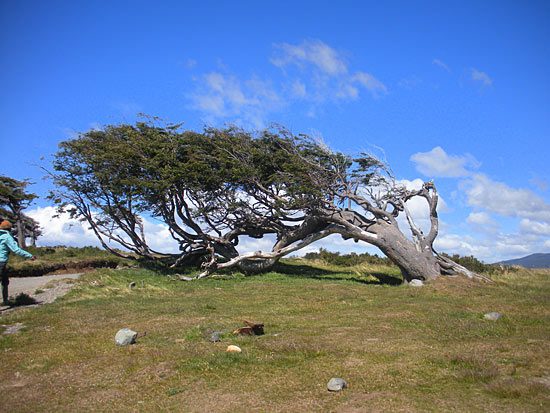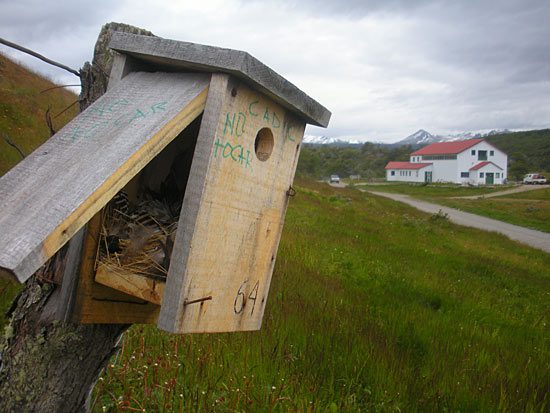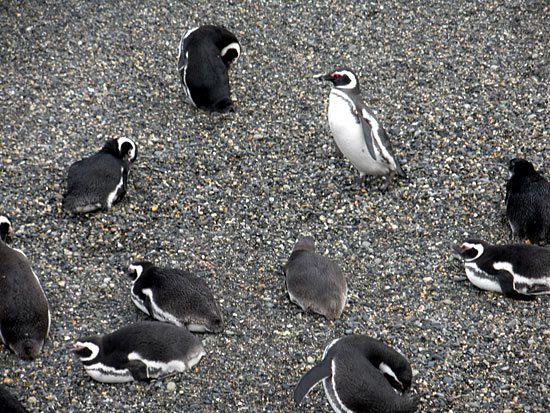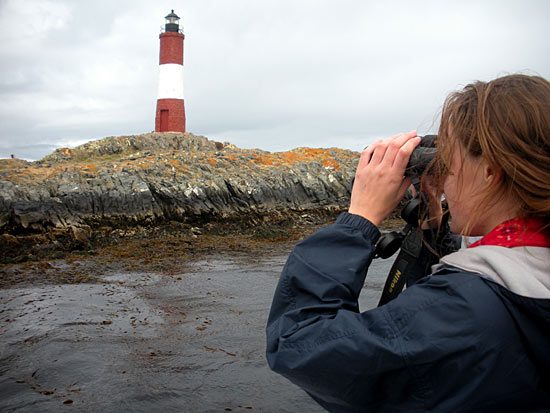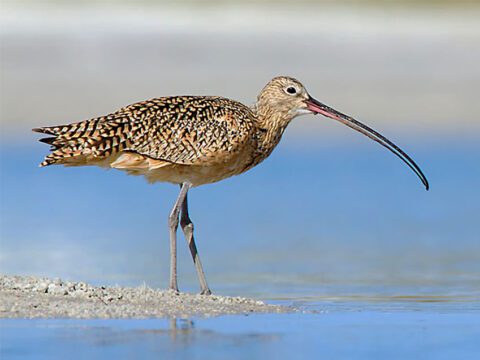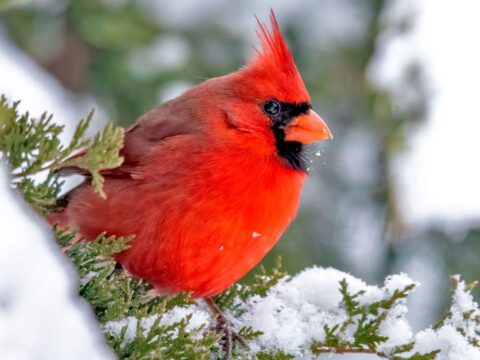Argentina: Crossing the Beagle Channel
By Daisy Yuhas December 23, 2010
Trees blown almost horizontally by the wind are a distinctive feature of Harberton. 
At Estancia Harberton, nest boxes overlook windswept rolling hills 
The ferry crossing passes a "pinguinería" where Magellanic Penguins gather 
Daisy glasses the "faro al fin del mundo" or "Lighthouse at the End of the World"
I’m enjoying the view from my seat on a catamaran ferry across the Beagle Channel. I’m feasting on empanadas and reviewing my notes from the past week spent at Estancia Harberton. Albatrosses, petrels, and cormorants speckle the vista, and from the deck I had a good view of a pinguinería, where playful Magellanic and Gentoo Penguins waddle and dive.
Estancia Harberton (Harberton Ranch) is the base for our second field site in the Ushuaia environs. There, about 70 nest boxes look out over rolling, windswept hills to the Beagle Channel in one direction and Andean mountains in the other. The winds are so strong that one of the most distinctive features of the area is the sight of horizontally stretched trees, twisted and misshapen by gusts.
The Anglican missionary Thomas Bridge established this ranch in 1886, making it the oldest estancia in Tierra del Fuego. Bridges also wrote the dictionary of the native Yamana people’s language. At this site, my fellow Golondrinas interns and I live in the estancia’s Museo Acatushún, a museum housing the skeletons of marine mammals and birds from Tierra del Fuego’s San Sebastian Bay.
The swallows here began building nests a week or so earlier than the swallows at the peat-farm site, so we’ve kept busy over the course of the week with egg metabolism studies and tracking the development of nestlings.
To understand nestling development we’re catching and banding adult birds—parents bringing juicy insects home to their hungry brood. The bands help us keep track of individuals, and already we are noticing that most of these birds are recaptures—adults that return from one year to the next.
By taking very small samples of blood from these adults, we will be able to check how related the birds are to each other—which can give us a sense of the genetic diversity of the birds at this and other sites, as well as the paternity of eggs within each nest. (We release the birds with their meals intact after just a few minutes of handling, so they can return to their hungry young.)
I can see clouds gathering ominously over Ushuaia. The weather here is unpredictable—one day is sunny and feels about 20 degrees Celsius (a balmy 68 Fahrenheit)—the next there is snow, rain and sleet. Some days the wind is blowing so hard that we can barely get our car doors open and walking our trails requires a 45 degree tilt into the wind.
The boat is rocking across strong waves in the channel, and several passengers are discreetly taking out white paper bags. If this kind of weather holds, the next few days could be tough for our birds, and furthermore it might just be a white Christmas in Ushuaia—just four days after this hemisphere’s Midsummer’s Day.

All About Birds
is a free resource
Available for everyone,
funded by donors like you
American Kestrel by Blair Dudeck / Macaulay Library
